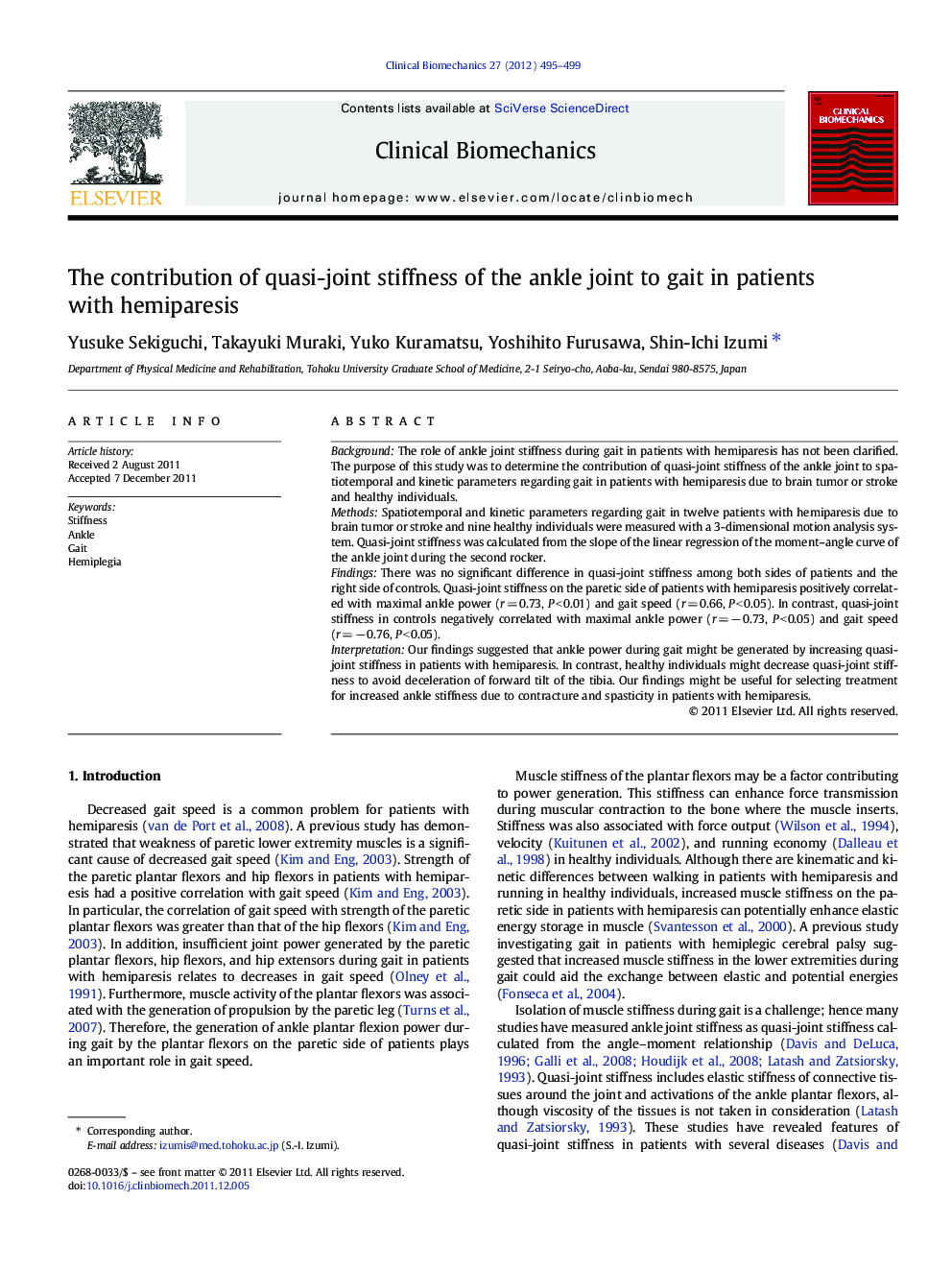| Article ID | Journal | Published Year | Pages | File Type |
|---|---|---|---|---|
| 4050522 | Clinical Biomechanics | 2012 | 5 Pages |
BackgroundThe role of ankle joint stiffness during gait in patients with hemiparesis has not been clarified. The purpose of this study was to determine the contribution of quasi-joint stiffness of the ankle joint to spatiotemporal and kinetic parameters regarding gait in patients with hemiparesis due to brain tumor or stroke and healthy individuals.MethodsSpatiotemporal and kinetic parameters regarding gait in twelve patients with hemiparesis due to brain tumor or stroke and nine healthy individuals were measured with a 3-dimensional motion analysis system. Quasi-joint stiffness was calculated from the slope of the linear regression of the moment–angle curve of the ankle joint during the second rocker.FindingsThere was no significant difference in quasi-joint stiffness among both sides of patients and the right side of controls. Quasi-joint stiffness on the paretic side of patients with hemiparesis positively correlated with maximal ankle power (r = 0.73, P < 0.01) and gait speed (r = 0.66, P < 0.05). In contrast, quasi-joint stiffness in controls negatively correlated with maximal ankle power (r = − 0.73, P < 0.05) and gait speed (r = − 0.76, P < 0.05).InterpretationOur findings suggested that ankle power during gait might be generated by increasing quasi-joint stiffness in patients with hemiparesis. In contrast, healthy individuals might decrease quasi-joint stiffness to avoid deceleration of forward tilt of the tibia. Our findings might be useful for selecting treatment for increased ankle stiffness due to contracture and spasticity in patients with hemiparesis.
